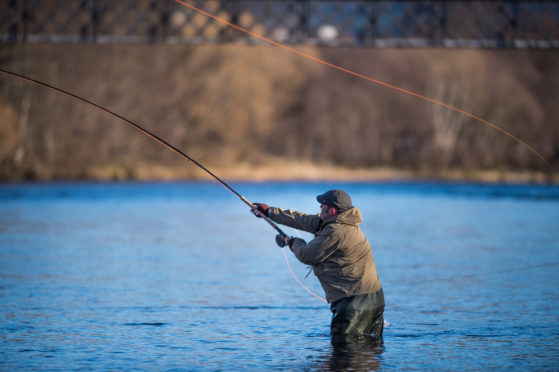Efforts to improve dwindling fish stocks on the River Spey have received a funding boost to protect species from climate change.
Catches on the water hit an all-time low during 2018 when just 3,178 salmon were reeled in by anglers.
The total leaped back to 5,090 last year but concerns persist about a long-term decline on the river and the rest of Scotland – with fears that without action the Atlantic salmon could become extinct.
Now the Spey Catchment Initiative has received a £192,000 grant from Scottish Natural Heritage to help nurture young fish.
The project on the River Calder, which is one of the Spey’s upper tributaries, near Newtonmore, will fund extensive tree planting to provide shade to cool the water.
Investigations have already been done in the area with local estates to create wooden structures to provide sanctuary for young fish as well as helping to slow the fast-flowing river, which is also hoped to provide some flood protection in the area.
Roger Knight, director of the Spey Fishery Board, believes the changes will provide long-term benefits for several wildlife species.
He said: “Often we can only tackle parts of a river, or problems at specific locations, but this grant will enable the Spey Catchment Initiative to tackle the River Calder catchment at a landscape scale.
“It will be the biggest project so far for the Initiative, benefitting not just the fish populations there, but the ecology and biodiversity of the wider environment, whilst also providing some flood risk alleviation benefits for the Spey catchment down below.”
It is hoped that work will be able to begin on the projects next month.
Angling on the River Spey is estimated to generate about £15million per year for communities that line its route while sustaining 350 jobs.
However, it is feared that if catches continue to follow a long-term declining trend then visitors may choose to stop returning.
Penny Lawson, the Spey Catchment Initiative’s project officer, said: “Anything that can be done to improve the young salmon population there is positive, but this project will bring long-term benefits to many other species of wildlife too and help future-proof the area against the onset of climate change.
“It will be a significant enhancement for biodiversity and the wider environment and is particularly good news in these otherwise troubled times.”
